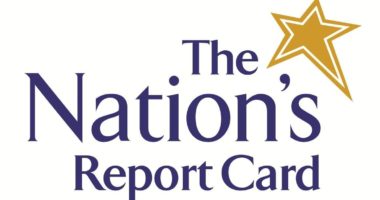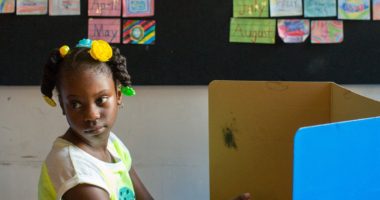Ed Trust Finds an Alarming Number of Negative Stereotypes and Underrepresentation of People of Color in the Curriculum Taught in U.S. Schools
CONTACT: Nicolle Grayson
ngrayson@edtrust.org
202-293-1217
Study results expose flawed reasoning for recent book bans and censorship in K-12 education
WASHINGTON — In nearly every state, bills were introduced, or other legislative actions took place to limit the discussion of race, gender, sexuality, and systemic inequities in K-12 education. These restrictions — including censorship and book bans — affect all students’ social, emotional, and academic well-being — especially students of color. Proponents of the so-called “anti-CRT” legislation claim that K-12 education has too much diversity and contains too many perspectives. However, the results of The Education Trust’s study released today, “The Search for More Complex Racial and Ethnic Representation in Grade School Books,” reveal that these assertions are erroneous. In fact, they could not be further from the truth.
The report examines racial and ethnic representation in the books used in U.S. curricula and finds that White authors and characters are far more numerous than authors and characters of any other race or ethnicity. When people of color are included in curricula, they are often portrayed in limited ways. In a study that looked at 300 English Language Arts books, Ed Trust researchers found that almost half of the people of color centered in these books were one-dimensional, portrayed negatively, or did not have agency. When books included groups and cultures of color, they often used stereotypes, disconnected culture from individual people, or portrayed those groups as less than or unequal to others. And, when historical and social topics were included, they were almost always sanitized, told through a singular perspective, or disconnected from the structural realities that help students make meaning of the reading.
“There has always been representation in curricula — and that representation is predominantly White,” said Tanji Reed Marshall, Ph.D., co-author of the report.
“Despite an extremely narrow representation of people of color, the nation is witnessing a well-funded political strategy to erase the very few books schools have to prepare students to compete in a global economy by learning about people of different races and ethnicities. While fighting to stop book bans, advocates must also push for including books with characters of color who are fully realized and positively represented,” Marshall continued.
According to PEN America, a nonprofit organization that tracks book ban data, there were 1,477 instances of individual book bans during the first half of the 2022-2023 school year — an increase of 28% compared to the prior six months. Of the books banned from July 2021 to June 2022, 40% of the banned titles had protagonists or prominent secondary characters of color, and 21% had titles indicating issues of race or racism. Examples of banned books include I Am Rosa Parks, I Am Martin Luther King, Jr,, The Bluest Eye, and The Hill We Climb.
“Across the country our students face increasing attacks on their ability to learn true history and see themselves reflected positively in classroom materials. This report should concern all families who believe our children should have access to high-quality and age-appropriate curriculum,” said Heather Harding, Ed.D., executive director of the Campaign for Our Shared Future. “We must protect all students’ rights to school materials that accurately represent the diversity of our communities and portray all of our neighbors in a positive way. Together we must reject un-American book banning and censorship.”
Ed Trust researchers noted that publishers, state boards, districts, and educators have worked hard in recent years to increase representation in curricula, but there is still much more to be done. To prepare all students to function in a multicultural world, to build intellectual skills for addressing tomorrow’s problems, to push back against a growing censorship movement, and to advocate for authentic racial representation in books, Ed Trust offers six recommendations to move curricula development toward representational balance:
- Challenge dominant norms and singular perspectives
- Expand publisher and educator definitions of cultural relevance
- Ask a new set of questions about representation
- Consider how texts sit in conversation with one another
- Expand educator choice in curated materials
- Provide professional learning to all curriculum decision-makers, including authors and developers
“We are witnessing a literacy crisis and historic drops in student achievement, and better representation in our classroom books will help all students achieve. The fact is that students of color learn and perform better when they see themselves and their experiences authentically and non-stereotypically reflected in their school curricula,” said William Rodick, Ph.D., one of the study’s authors.
“Seeing a diverse set of people in books also helps White students develop a deeper understanding of their racial and ethnic identity and the world around them, which is filled with people of varying ethnicities and cultures. We need more books with accurate portrayals of people of color, not fewer.” Rodick concluded.
###
The Search for More Complex Racial and Ethnic Representation includes the Tool for Representational Balance in Books, which allows users to check how books represent people, cultures, and topics. The tool helps curriculum decision-makers — as well as librarians, educators, and families — better understand representation in the books in their curricula. This report builds on Ed Trust’s #CantBeErased campaign to push back against book bans in schools nationwide.
To view and download the report, visit edtrust.org/curriculum, and to check out the tool, go to edtrust.org/booktool.
About The Education Trust
The Education Trust is committed to advancing policies and practices to dismantle the racial and economic barriers embedded in the American education system. Through our research and advocacy, Ed Trust improves equity in education from preschool through college, engages diverse communities dedicated to education equity and justice, and increases political and public will to build an education system where students will thrive.







